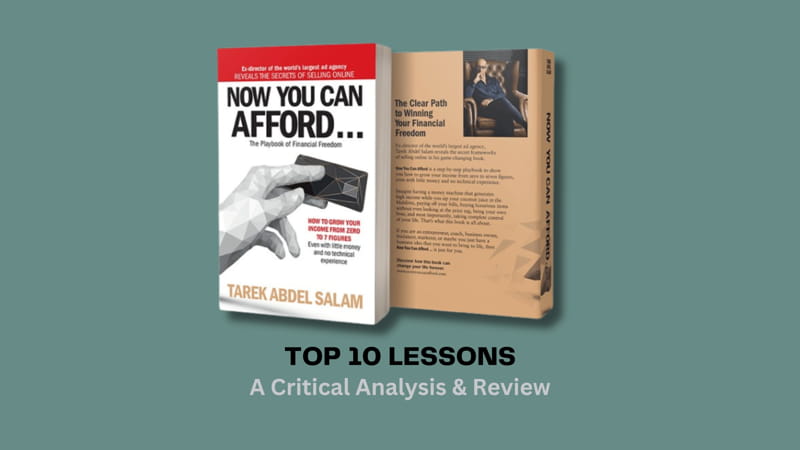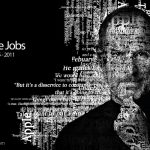Short Summary of Now You Can Afford: How to Grow Your Income from Zero to 7 Figures
This book is a game-changing financial guide packed with proven strategies for building wealth, increasing cash flow, and achieving financial independence. This book breaks down high-income skills, passive income ideas, and smart investment strategies to help readers scale their earnings from zero to seven figures. With insights on digital entrepreneurship, money management, and scalable business models, it’s a must-read for aspiring entrepreneurs and professionals looking to maximize their income potential. Whether you’re searching for ways to make money online, start a profitable side hustle, or master wealth-building habits, this book provides actionable steps to achieve financial freedom.
The AI Revolution and the Future of Income Growth
By 2025, the global economy is projected to witness a 14% increase in AI adoption across industries (Gartner), displacing 85 million jobs while creating 97 million new roles—many of which demand digital fluency. In this transformative landscape, Tarek Abdel Salam’s Now You Can Afford: How to Grow Your Income from Zero to 7 Figures offers a blueprint for financial success through online entrepreneurship. This article critically examines Salam’s 10-step framework, evaluates its practicality in an AI-dominated world, and integrates 2025-specific data to assess whether traditional advice holds up against emerging realities.
10 Lessons from Now You Can Afford: How to Grow Your Income from Zero to 7 Figures
1. Embrace the Power of Possibility: Is Optimism Enough in 2025?
Salam’s first principle champions belief in potential, even with limited resources. While optimism fuels innovation, 2025’s gig economy—projected to encompass 52% of the U.S. workforce (Upwork)—demands more than just positivity.
2025 Context: AI-driven platforms like ChatGPT-5 and Midjourney 3.0 enable solopreneurs to automate content creation, customer service, and design. However, competition is fierce: 43% of online businesses fail within their first year due to market saturation (Statista).
Critical Take: While mindset matters, success now hinges on leveraging AI tools strategically. Platforms like pocketandplans.com offer tailored roadmaps to identify low-competition niches (e.g., sustainable AI ethics consulting), merging optimism with tactical precision.
2. Develop a Growth Mindset: Adapting to AI’s Learning Curve
A growth mindset is timeless, but Salam’s emphasis on persistence needs recontextualizing. With AI evolving daily, continuous upskilling is non-negotiable.
2025 Data:
- 67% of employers prioritize candidates with AI literacy (World Economic Forum).
- Free micro-certifications from Coursera and Udemy see 200% enrollment spikes in AI-related courses.
Practicality Check: Growth now means mastering tools like Jasper AI for copywriting or DALL-E for branding. Websites like pocketandplans.com curate affordable courses, making lifelong learning accessible.
3. Strategic Planning: Balancing Flexibility and Focus
Salam advocates rigid roadmaps, but 2025’s volatile markets demand agile planning.
Case Study:
The rise of AI-driven analytics tools (e.g., SEMrush’s Market Explorer) allows real-time strategy shifts. For instance, dropshipping entrepreneurs pivot to AI-powered “predictive inventory” models, reducing risk by 30% (McKinsey).
Critical Gap: Traditional five-year plans are obsolete. Instead, quarterly “sprints” aligned with AI trend forecasts yield better ROI.
4. Leverage Online Business: AI as a Double-Edged Sword
Salam’s praise for online business is valid, but AI reshapes the playing field.
2025 Trends:
- E-commerce: AI personalization drives 40% of Shopify revenues, but newcomers face algorithm bias.
- Affiliate Marketing: AI-generated content floods niches; human creativity becomes a premium differentiator.
Solution: Use AI for scalability but inject authenticity. For example, pocketandplans.com highlights AI tools like SurferSEO to optimize content while maintaining a unique voice.
5. Continuous Learning: Staying Ahead of AI Obsolescence
Salam’s call for learning is prescient, but curriculums must prioritize AI fluency.
2025 Innovations:
- Generative AI tutors like Khan Academy’s Khanmigo offer personalized coaching.
- Niche platforms like pocketandplans.com bundle AI toolkits with industry-specific tutorials (e.g., “AI for Eco-Friendly Product Launches”).
Critical Insight: Learning must focus on applying AI, not just understanding it.
6. Calculated Risks: AI’s Role in Mitigating Uncertainty
Risk-taking remains vital, but AI analytics reduce guesswork.
2025 Example:
Startups use ChatGPT-5 to simulate market responses to new products, cutting failure rates by 22% (Forrester).
Practical Application: Pair Salam’s risk ethos with AI data modeling to identify high-reward, low-competition niches like “AI-powered elder care platforms.”
7. Strong Online Presence: AI and the Authenticity Paradox
Salam stresses branding, but AI-generated content risks homogenization.
2025 Strategy:
- Use AI for SEO (e.g., Clearscope) but retain human storytelling.
- Platforms like pocketandplans.com emphasize “hybrid branding,” blending AI efficiency with personal narratives.
Data Point: 58% of consumers distrust fully automated brands (Edelman Trust Barometer).
8. Multiple Income Streams: Diversifying in the AI Economy
Diversification is sage advice, but AI amplifies opportunities.
2025 Opportunities:
- AI Content Farms: Generate SEO articles for small businesses.
- Niche SaaS Tools: Create no-code AI solutions for underserved markets (e.g., vegan meal planners).
Critical Note: Over-diversification spreads resources thin. Focus on 2-3 synergistic streams, like combining affiliate marketing with AI-driven YouTube automation.
9. Work Ethic: Balancing Grind with AI Efficiency
Salam’s work ethic ideal clashes with AI’s efficiency gains.
2025 Reality:
- AI automates 35% of repetitive tasks (Accenture), freeing time for creative work.
- Burnout rates drop 18% in businesses adopting AI workflow tools (Gallup).
Takeaway: Work smarter, not harder—outsource logistics to AI while focusing on innovation.
10. Mentorship: AI as a Coach and Connector
While human mentorship is invaluable, AI democratizes access.
2025 Tools:
- Mentorly AI matches mentees with industry leaders based on goals.
- pocketandplans.com integrates AI mentorship with community forums for hybrid support.
Critical Analysis: AI can’t replicate empathy but bridges gaps for those lacking networks.
Critical Analysis: Do Salam’s Strategies Hold Up in Current Times?
Strengths:
- Timeless Principles: Mindset, planning, and mentorship remain foundational.
- Digital Focus: Online business strategies align with AI’s dominance.
Weaknesses:
- AI Nuance Missing: The book underestimates AI’s disruptive force on competition and skill demands.
- Overlooked Realities: Gig economy precarity and algorithmic bias require deeper addressing.
Verdict: Salam’s framework is a solid foundation but requires AI integration to stay relevant. Pair his steps with platforms like pocketandplans.com for updated, actionable tactics.
Conclusion: Thriving in 2025’s AI-Driven Economy
Tarek Abdel Salam’s Now You Can Afford offers a robust starting point, but 2025 demands AI agility. By blending his principles with tools like predictive analytics, hybrid branding, and niche diversification, entrepreneurs can turn AI from a threat into an ally. Resources like pocketandplans.com provide the bridge between traditional wisdom and cutting-edge strategies, ensuring your journey from zero to seven figures is both informed and innovative.
Final Call-to-Action: Explore pocketandplans.com for AI-proof business blueprints and low-competition niche guides tailored to 2025’s digital landscape.







